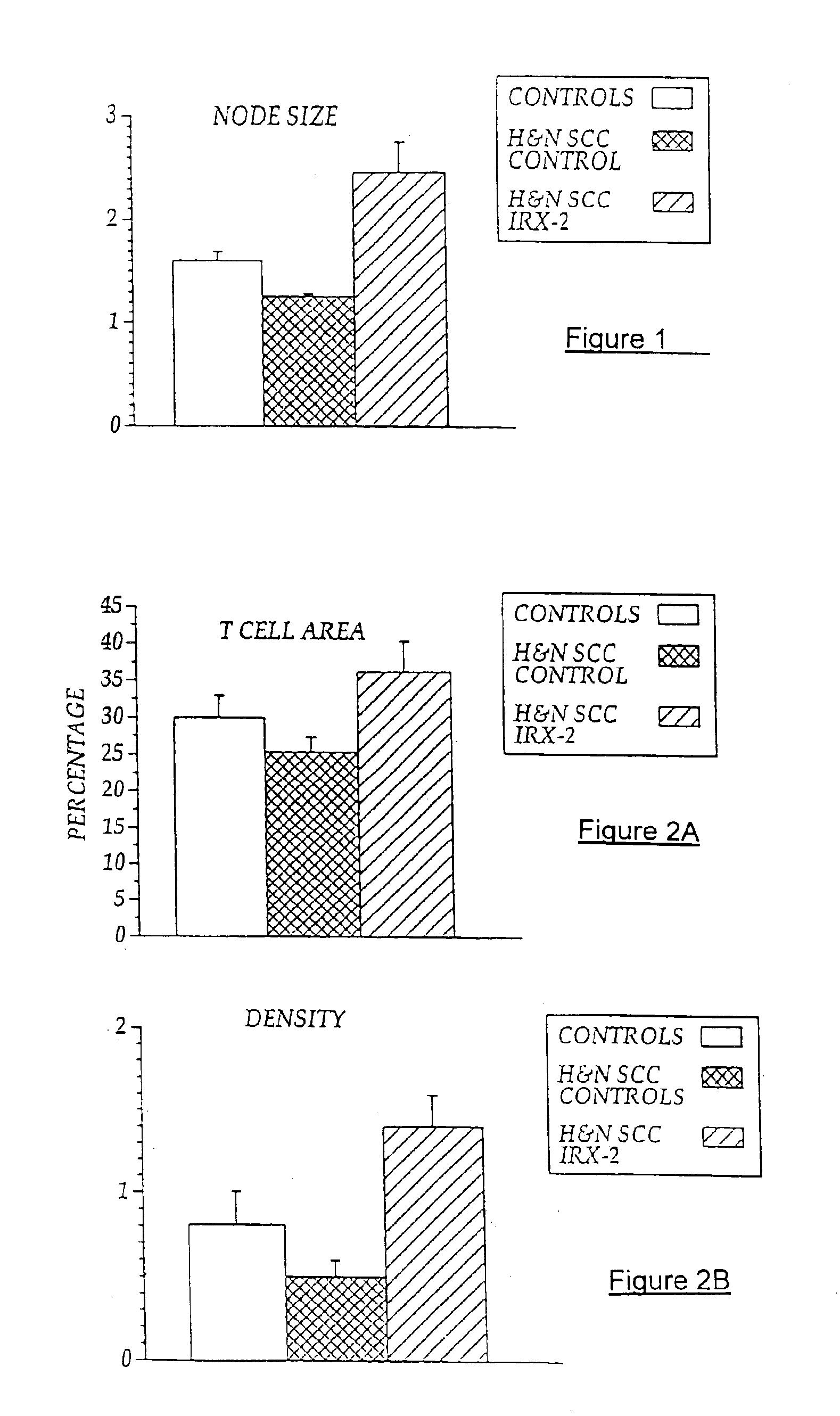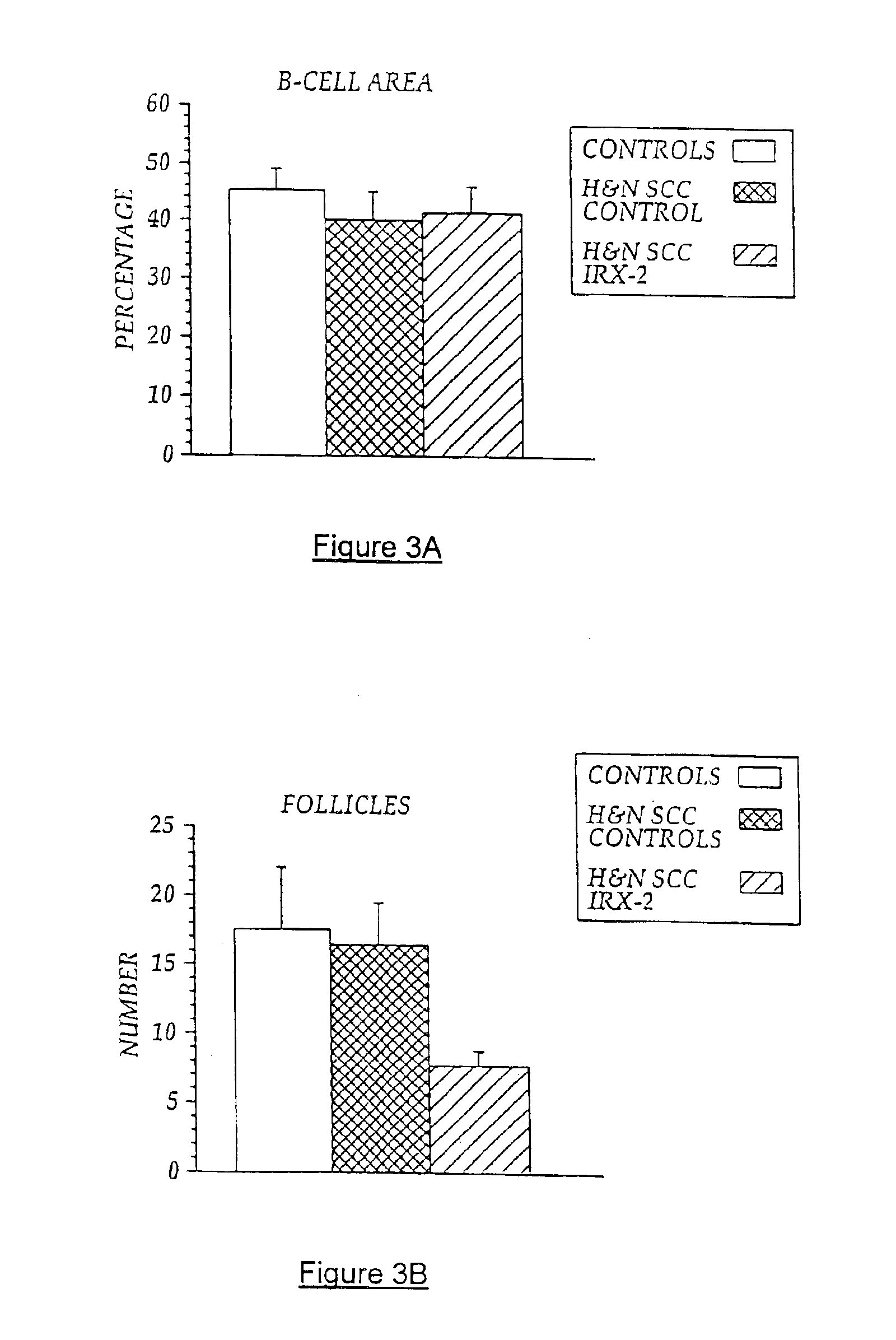Vaccine immunotherapy for immune suppressed patients
a technology for immunosuppression and vaccines, applied in the field of vaccine immunotherapy, can solve the problems of sporadic and generally minor successful efforts, inability to immunize patients on a consistent basis, and inability to achieve consistent immunization, so as to prevent the development of metastasis and promote differentiation and maturation
- Summary
- Abstract
- Description
- Claims
- Application Information
AI Technical Summary
Benefits of technology
Problems solved by technology
Method used
Image
Examples
example 1
[0103]Local perilymphatic injections in the neck having NCM plus low dose CY, INDO, and zinc have induced clinical regressions in a high percentage of patients with squamous cell head and neck cancer (H&NSCC) (Hadden J W, et al., Arch Otolaryngol Head Neck Surg. 120:395-403,1994; Meneses A, et al., Arch Pathol Lab Med 122:447-454, 1998; Barrera J, et al., Arch Otolaryngol Head Neck Surg 126:345-351, 2000; Hadden, et al., 2003; Menesis, et al., 2003) with evidence of improved, recurrence-free survival. Overall, including minor response (25%-50%) tumor shrinkage and reduction of tumor in pathological specimens, over 90% responded and the majority had greater than 50% tumor reduction.
[0104]These responses are speculated to be mediated by immune regression since both B and T lymphocytes were observed infiltrating the tumors. The therapy was not associated with significant toxicity. Treatment of lymphocytopenic cancer patients with the combination of NCM has resulted in marked lymphocyte...
example 2
[0110]Further analysis of the clinical, pathological and survival data of the aforementioned INCAN study offer more insights into the nature of the invention as it relates to immunization of cancer patients to their own autologous tumor antigens and the resulting immune regression of their tumors. FIG. 6 shows that the treatment with the NCM protocol (IRX-2) is associated with increased survival at 48 months (p50% tumor reduction) have better survival than those with minor responses (MR) (25% tumor reduction) or no response (NR)(<25%)(p<0.01). FIG. 8 shows that patients with stronger pathological responses (index of 6-9) have better than those with weaker pathological responses (<6) (p<0.02). FIG. 9 shows that lymphoid infiltration into the tumor as a single variable predicts survival (p<0.01). Finally, Chi Square analysis of the relationship of clinical response to the pathological response shows a highly significant relationship (p<0.01) indicating that the two are coordinately re...
example 3
[0111]Two patients were treated with lymphoma of the head and neck. The patients included were those with head and neck cancer who agreed to participate in the protocol. The following scheme was followed.
[0112]Before treatment, the patients were skin-tested with NCM 0.1 ml subcutaneously in the forearm, the region was marked, and 24 hours later the test was read. The test was considered positive if the induction and erythema was equal or larger than 3mm.
PUM
| Property | Measurement | Unit |
|---|---|---|
| concentration | aaaaa | aaaaa |
| concentration | aaaaa | aaaaa |
| tumor shrinkage | aaaaa | aaaaa |
Abstract
Description
Claims
Application Information
 Login to View More
Login to View More - R&D
- Intellectual Property
- Life Sciences
- Materials
- Tech Scout
- Unparalleled Data Quality
- Higher Quality Content
- 60% Fewer Hallucinations
Browse by: Latest US Patents, China's latest patents, Technical Efficacy Thesaurus, Application Domain, Technology Topic, Popular Technical Reports.
© 2025 PatSnap. All rights reserved.Legal|Privacy policy|Modern Slavery Act Transparency Statement|Sitemap|About US| Contact US: help@patsnap.com



